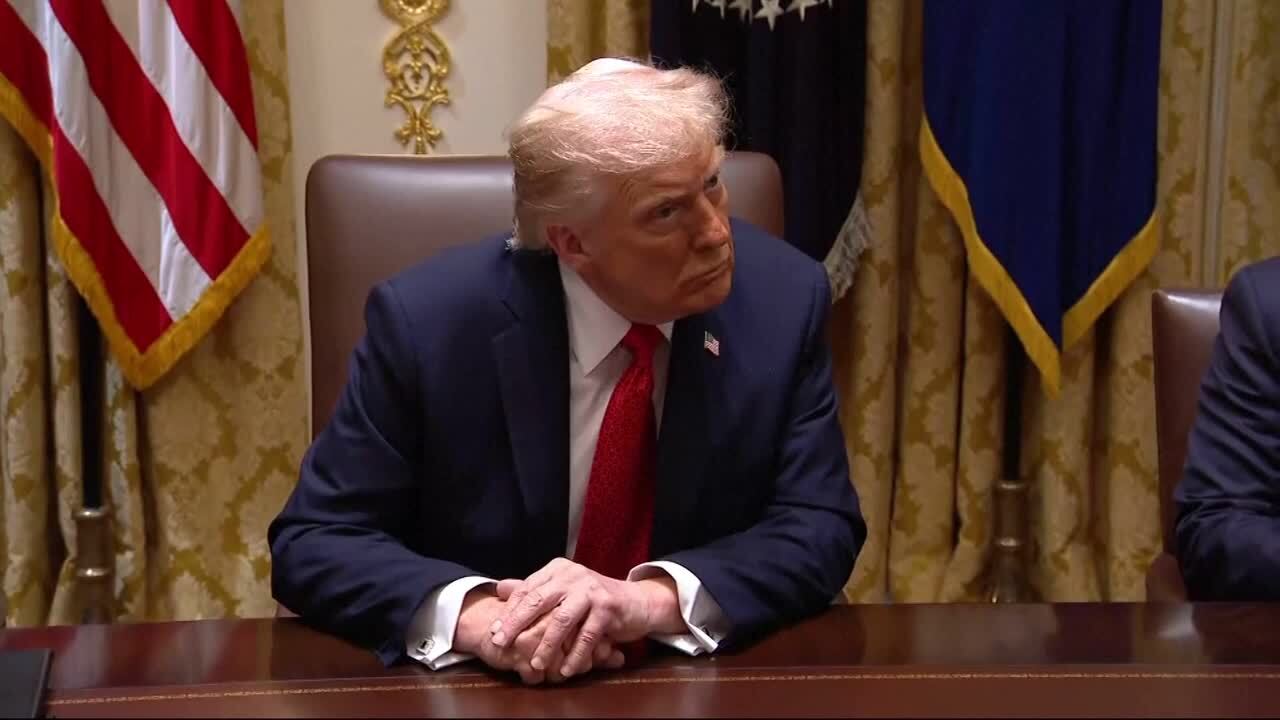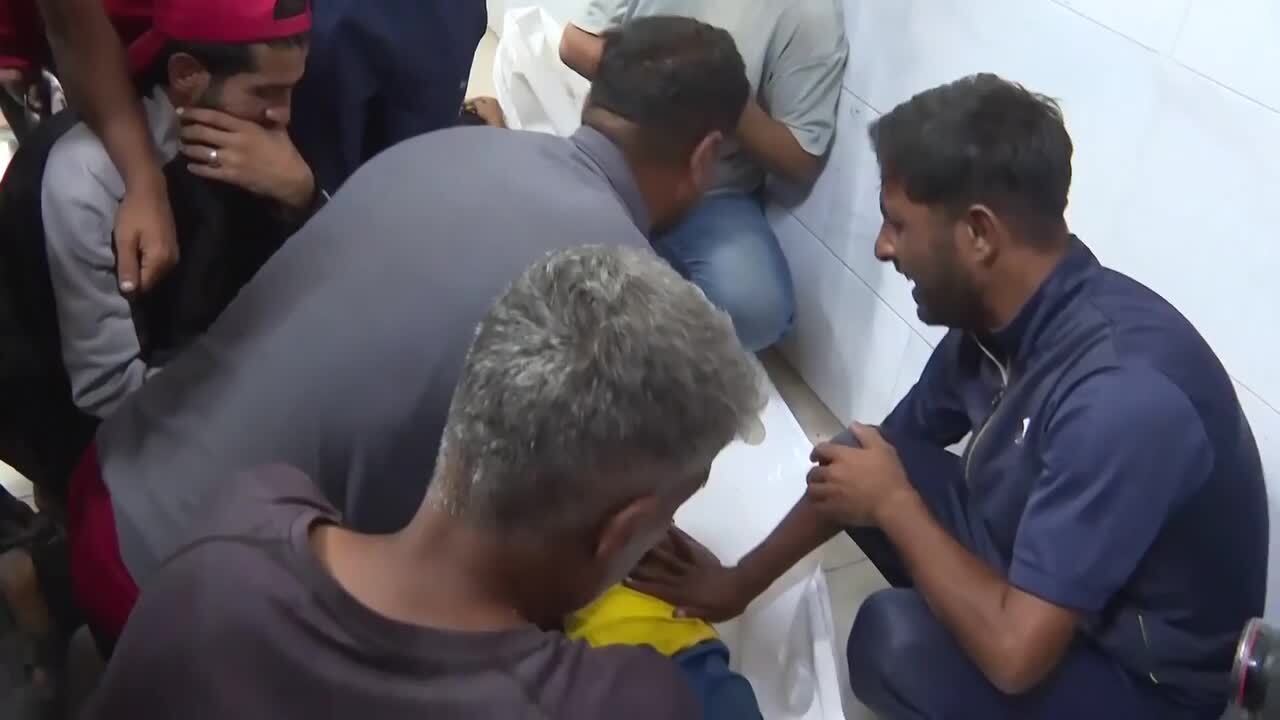Joseph V. Micallef is a best-selling military history and world affairs author, and keynote speaker. Follow him on Twitter@JosephVMicallef.
The last several weeks have seen significant developments in the continuing crisis over North Korea's development of nuclear armed missiles. On July 4 and July 28, North Korea tested two new Hwasong 14/ KN 20 missiles.
Subsequently, North Korea's "Supreme Leader" Kim Jong-un made several announcements concerning Pyongyang's intent to either launch a missile attack on Guam or to test additional missiles that would splash down near Guam.
His comments brought a quick rebuke from President Donald Trump who warned Pyongyang that any attack on U.S. soil would bring "fire and fury" raining down on North Korea. In the meantime, U.S. Secretary of State Rex Tillerson and other senior U.S. government officials kept emphasizing the need for a diplomatic solution.
Secretary of Defense James Mattis and Chairman of the Joint Chiefs General Joseph Dunford also emphasized the desirability of a diplomatic solution while at the same time making it clear than an attack on U.S. soil would bring a quick and devastating response to North Korea.
In the meantime, several U.S. intelligence agencies announced that that had revised their assessment on the state of Pyongyang's nuclear development program and that they now believe North Korea has successfully developed a miniaturized atomic device capable of being fitted on a ballistic missile. Concurrently, the UN Security Council unanimously passed a resolution imposing trade sanctions on approximately one billion dollars of North Korean exports of coal, iron and seafood, among others.
Related content:
- As North Korea Vows Response, US Dismisses Calls to Pause Drills
- Mattis to Kim Jong-un: US Would ‘End’ North Korean Regime
- Trump: North Korea Faces ‘Fire and Fury’ if Threats Continue
- North Korea Vows to ‘Make US Pay a Thousand-Fold’ for UN Sanctions
- Q&A: What Does the US Military Do on the Island of Guam?
What comes next? To answer that we must answer three questions. First, how likely is it that North Korea has been able to develop a warhead capable of being carried on a ballistic missile that has the range to strike the United States? Secondly, is a diplomatic solution possible and thirdly, what would a diplomatic solution look like?
North Korea tested its latest intercontinental range missile, a Hwasong-14 /KN 20 on July 28. An earlier test of the same missile occurred on July 4. The missile, launched from the launch facility at Mup'yong-ni, was airborne for approximately 47 minutes, covering a distance of about 600 miles and reached an apogee of approximately 2,200 miles.
Based on its flight time and apogee, intelligence analysts have estimated that the missile would have a range of approximately 6,000 to 6,500 miles; sufficient range to strike the east coast of the United States. It's not clear whether the missile carried any kind of a payload or its weight or how its range would be reduced if it carried a nuclear warhead. At the very least, however, this missile would be able to strike a significant portion of the American mainland.
While it was only a question of time until North Korea developed missiles with sufficient range to hit the U.S. mainland, this development occurred several years earlier than expected. Michael Elleman, an expert on Russian missile technology at the International Institute for Strategic Studies, suggested that North Korea may have obtained rocket engines from a plant in Ukraine that was once part of the Soviet and later Russian missile programs. The Yuzhmash factory in Dnipro, Ukraine specialized in building engines for intercontinental range ballistic missiles.
Mup'yong-ni is a weapons manufacturing facility and is approximately 75 miles away from the usual launch facility at Kusong (Banghyon airfield). This was the first time a missile launch had occurred at Mup'yong-ni and was likely meant to show that Pyongyang has multiple sites available from which to launch missiles.
The test occurred at night under conditions intended to mimic operational use. The Hwasong 14 is a liquid fuel rocket mounted on a TEL (Transporter Erector Launcher). A road mobile ICBM is harder to find and presumably therefore harder to destroy. However, TEL launched missiles are usually solid fuel rockets since, in the opinion of most analysts, the fuel tanks of liquid fueled rockets would likely suffer damage while being moved over roadways.
This would be especially true for North Korea's road system. North Korea does have a TEL mounted solid fuel rocket -- the Pukkuksong 2/KN 15. This missile, however, only has an intermediate range of about 1,200 miles.
Interestingly, prior to the July 28 launch, Western intelligence agencies observed the presence of a Hwasong 14 TEL at the missile launch facility at Kusong. It's not clear if that was the missile ultimately fired at Mup'yong-ni. It's possible that Pyongyang was sending a subtle signal to the U.S. that its road mobile Hwasong 14s could in fact take the beating of being moved over North Korea's roads.
On March 9, 2017, the North Korean News Agency (KCNA) announced that Pyongyang had successfully developed a miniaturized warhead and published pictures of Kim Jong-un standing next to what appeared to be the casing of a warhead designed to fit on a nuclear missile. There was no way of knowing whether the casing contained a miniaturized atomic device or whether it was empty.
At the time, most Western intelligence agencies dismissed the claim as premature, although most acknowledged that it was only a matter of time until North Korea reached that threshold. In recent weeks the Defense Intelligence Agency, among others, has concluded that Pyongyang has achieved that objective or will do so shortly. On what basis was that assessment changed?
If that is true, then North Korea now poses a distinct nuclear threat to South Korea and Japan, both important U.S. allies, and likely has between 100 and 200 missiles, across several different types, capable of being deployed.
While Pyongyang lacks sufficient nuclear warheads to arm that many missiles and while not all its missile types could be fitted with a nuclear device, a mass launch of a mix of conventional, chemical and nuclear armed missiles would test Japan and Korea's anti-missile defenses and it is likely that some missiles would get through to their intended targets.
It's possible that new information was obtained that confirmed the North Korean announcement. If so, it's understandable that such information would not be made public for fear of disclosing the "sources and methods" used to obtain it. Alternatively, it might simply indicate that intelligence analysts are being more cautious, especially considering the notable progress that North Korea has been making in developing its nuclear missile technology.
These kinds of intelligence assessments are as much an art form as they are a factual-based brief. Moreover, unlike what is typically portrayed in films and thrillers, they are rarely the product of a single brilliant analyst, but usually the result of a multi-person, deliberative committee with all the compromise and lowest common denominator that a committee-based, decision-making process implies. There is probably a certain amount of CYA that's also taking place here.
If North Korea has been able to develop a missile-ready warhead and intelligence agencies fail to spot it, then the development becomes a colossal intelligence failure. If on the other hand, the intelligence community announces that North Korea has reached that milestone or will do shortly, there is little downside if the announcement turns out to be slightly premature. Assuming of course, that the assessment doesn't become a pretext for launching a military strike. The circumstantial evidence, admittedly scanty, points to the latter conclusion.
Significantly, the reassessment has come primarily from American intelligence agencies. Allied intelligence agencies do not seem to have altered their assessment of North Korea's nuclear progress. To be fair, among the U.S. and its allies, Washington generally has the best intelligence on Pyongyang's nuclear activities.
On the other hand, if new information about North Korea's nuclear program had emerged, it is likely that the U.S. would have shared it with its key allies. The fact that the reassessments are predominantly American suggests they reflect a greater caution on the part of intelligence analysts rather than credible new information.
In addition, the Central Intelligence Agency has concluded that even though the reentry vehicle carried by the Hwasong missile in the July 28 test broke up on reentry into the atmosphere, it would have likely survived its reentry under a normal, minimum energy trajectory. The test also demonstrated that North Kores has made significant progress in being able to control the trajectory of a reentry vehicle.
Regardless of the status of North Korea's nuclear missile program, the fact remains that even if Pyongyang has not yet crossed the miniaturized warhead threshold, it is only a matter of time until it does. Likewise, in the next few years, if it hasn't reached that point already, North Korea will have missiles capable of hitting targets throughout North America.
Either way, North Korea's nuclear weapons program is highly destabilizing to regional security and it is a problem for the United States and its Asian allies. The only question is the immediacy of the threat. Whether Pyongyang can reliably hit the U.S. mainland or not, there is no question that it already has missiles with sufficient range to threaten Japan and South Korea.
That begs the second question, is there a diplomatic solution or is an outbreak of hostilities between the U.S. and North Korea inevitable? Sanctions are on the dividing line between diplomacy and military confrontation. They can be an aggressive act but stop short of military conflict. In that sense, they can be part of a diplomatic solution or at least add teeth to such a solution that, while significant, stops short of outright war.
The UN Security Council has move resolutely, with Russian and Chinese support, to impose tough new sanctions on North Korea. The sanctions cover between a third and a half, around a billion dollars, of Pyongyang's exports. It does not, however, include petroleum imports, most of which come from China. Significantly, over 80 percent of these exports go to China.
China voted in favor of the sanctions and has announced it is in the process of terminating these imports from North Korea. If Beijing follows through, then these new sanctions will represent a crippling blow to North Korea's economy.
The new sanctions represent the seventh sanctions resolution imposed on North Korea over the last eleven years. As with past resolutions, the resolution calls on Pyongyang to rejoin the Nuclear Nonproliferation Treaty (North Korea signed the treaty in 1985 but withdrew in 2003), and restart the Six Party Talks (North Korea, South Korea, Japan, Russia, China and the U.S.) over Pyongyang's nuclear weapons program.
In the past, China has announced the implementation of sanctions against North Korea only to later backpaddle. Whether these sanctions are crippling enough to induce Pyongyang to change its behavior will depend largely on China's willingness to enforce them. Even if Beijing does enforce the sanctions, it's possible that Russia might move to further assist Pyongyang.
North Korea does not pose a threat to Russia, the Kremlin may see an opportunity in the Korean crisis to leverage its own agenda. Even then, it's highly unlikely that Russian aid could make up the trade shortfall created by China's enforcement of the sanctions.
The U.S. has disclosed that it has been conducting secret talks with North Korea. Clearly, once disclosed they are no longer a secret. In this case, their disclosure is a good indication that the talks themselves were going nowhere and by announcing them Washington could demonstrate that it has been serious about seeking a diplomatic solution.
Both China and Russia have offered a compromise diplomatic solution that would see the U.S. scale back or eliminate its military presence in South Korea in return for North Korea shutting down or limiting its nuclear program. Where that would leave Pyongyang's nuclear ambition is unclear. In any case the proposal is moot as it has been categorically rejected by the U.S.
South Korea's president Moon Jae-in has floated several diplomatic proposals designed to ease the tension over North Korea's nuclear program, but these have all been rebuffed by the North.
Understandably, the South Korean government is justifiably worried that Seoul, South Korea's capital and a city of some 30 million inhabitants just 30 miles from the demilitarized zone (DMZ) between the two countries, is hostage to any kind of North Korean attack, even if it did not include nuclear weapons. The damage in lives and property that would befall Seoul in the advent of war would be catastrophic.
In recent weeks, there has been some debate in Washington over whether the U.S. has any military options regarding North Korea. Former White House Chief Strategist and Senior Counselor to the President, Steve Bannon, famously announced that the U.S. did not have any military options with respect to North Korea and that Kim Jong-un had "already won."
Of course, the U.S. has military options in dealing with Pyongyang. That's a given when you have the world's strongest military. The issue is not whether Washington has a military option, the issue is who will pay the price if Washington exercises military force and would such force be sufficient to neutralize the threat posed by a nuclear armed North Korea?
Clearly, the brunt of the consequences of a military attack would fall on South Korea, and Seoul in particular. Japan would also be at significant risk. Even if the U.S. was successful in eliminating North Korea's first strike nuclear capability it could not be certain of eliminating its mobile, intermediate range second strike missiles. A capacity that will grow even less secure in the future. Moreover, a heavily armed Pyongyang would still have plenty of firepower, both conventional and chemical, to rain death and destruction on South Korea.
It's unlikely that effort could be sustained for any length of time, but even a short window would be sufficient to inflict considerable damage in both lives and property. In that sense, Seoul remains a hostage to North Korea's military capabilities and to any possible U.S. military response. That's why Seoul has insisted that the U.S. not undertake any military strikes against North Korea without first obtaining agreement from the South Korean government.
The most recent round of economic sanctions may prove crippling enough to bring Pyongyang to the bargaining table over its nuclear ambitions. Although North Korea has a long history of surviving and maneuvering around past sanctions.
Those sanctions, combined with ongoing diplomatic engagement, may resolve the current crisis without precipitating a military confrontation. Alternatively, it might precipitate regime change in Pyongyang in search of a face saving solution to end those sanctions and eliminate the danger of a military clash. That's highly unlikely, but possible. On the other hand, a cornered Kim Jong-un might well seek a military confrontation in an ultimate bluff if he feels he has nothing left to lose.
What would a diplomatic solution, short of regime change, look like? The likelihood that Kim Jong-un would dismantle his nuclear missile program, the principal U.S. demand, is very low. Likewise, the likelihood that the U.S. withdraw its military forces from South Korea as a precondition of shutting down North Korea's nuclear program is equally unlikely.
The more likely outcome is that Pyongyang would agree to limiting its future tests of atomic weapons and missile development and restart talks over its nuclear program in return for an easing of those sanctions and possibly some kind of food aid or financial assistance.
Such an outcome would likely be preceded by Pyongyang's announcement that it had achieved its objective of developing nuclear missiles capable of striking the U.S. and that further testing or development was not necessary or only minimally required.
That compromise would not solve the long-term problem posed by North Korea's nuclear ambitions or the threat it poses to America's allies in East Asia or ultimately the U.S. itself. Nor would that outcome be acceptable to the United States. It's China's position that is paramount here, however, not Washington's. Such a diplomatic compromise might be sufficient for China to roll back some or all the economic sanctions against Pyongyang and give the Kim Jong-un regime some breathing room.
The question is what would Washington do under those circumstances? Would a promise by North Korea to slow down its nuclear program be sufficient to forestall a U.S. military response? Would it still be willing to act unilaterally against North Korea or would it feel sufficiently constrained to defer military action? Would Washington consider a military response even if either Seoul or Tokyo are against a military solution?
Indeed, the frenzy with which Pyongyang has been pushing its nuclear development program may well reflect its belief that it will likely have to accept some constraints on the program in the future; hence the need to push its development as fast as possible and present the world with a fait accompli. It may also reflect Kim Jong-un's belief that he can successfully bluff his way through a confrontation with the U.S. just as his father did.
From Washington's perspective, the longer the North Korean nuclear program continues the harder it will be for military action to eliminate it. At the very least, the scale of any military action will increase proportionately with the passage of time.
Simply put, it is highly unlikely there is a diplomatic solution that will permanently resolve the threat posed by North Korea's nuclear weapons program. At best, a diplomatic solution will only result in a deferral of any U.S. military action in return for having North Korea slow down its nuclear weapons program.
Much as the U.S. and its allies did with Iran's weapons program, this will not solve the long-term problem posed by the ongoing nuclear proliferation of rogue regimes, it will simply put off the problem in the hope, probably vain, that by the time those regimes do perfect their nuclear weapons they will be easier to deal with. In other words, if you give a bully what he wants, albeit slowly, over time they will become less of a bully. If only that was true. Human history suggests the opposite conclusion.
There is one other wild card in the North Korean standoff -- Iran. The two countries have a long-standing cooperation in nuclear weapon and missile development. A cash strapped North Korea might be more willing to sell its nuclear technology to Iran, although it's likely that Pyongyang, at some point, will make such technology available to Tehran regardless of its economic condition.
It's also possible that Tehran will move more aggressively to support the North Korean regime, although it is unlikely that it can do so at a level sufficient to counter the impact of China's enforcement of the latest sanctions. What is clear, however, is that given Tehran's and Pyongyang's long-standing cooperation on nuclear weapons development, any attempt at limiting proliferation must consider both countries' nuclear weapons program in tandem.
It has been almost three-quarters of a century since the first atomic device was exploded. It is quite remarkable how successful the world community has been in limiting nuclear proliferation. But such limits could never be absolute. At best, they could slow down what would eventually become inevitable. We are now well past that threshold. The likelihood that rogue regimes will be able to not only obtain nuclear weapons but build an arsenal of such weapons is a 21st century reality.
While the U.S. could destroy, or at the very least severely cripple North Korea's nuclear development program, it can only do so by putting South Korea at a significant risk of loss of lives and property. There is a good chance that a diplomatic solution could be found that would, at least for the short-term, eliminate the likelihood of a military clash between the U.S. and North Korea.
Such a solution, however, will not end the long-term problem posed by Pyongyang's nuclear weapons program. It will simply push the problem into the future for someone else to deal with.
Long-term, the only likely way to deal with the threat posed by North Korea's nuclear ambition is regime change in Pyongyang. The question is will that regime change come because of U.S. military action, Chinese sponsored political intrigue or from the economic chaos created by ever tighter sanctions?
The opinions expressed in this op-ed are those of the author and do not necessarily reflect the views of Military.com.
-- If you would like to submit your own commentary, please send your article to opinions@military.com for consideration.





























